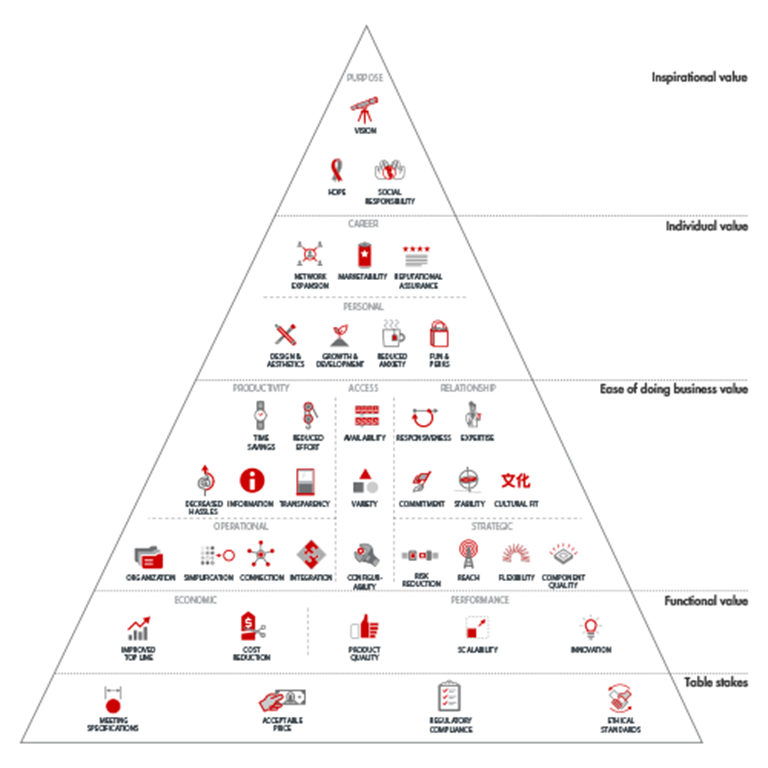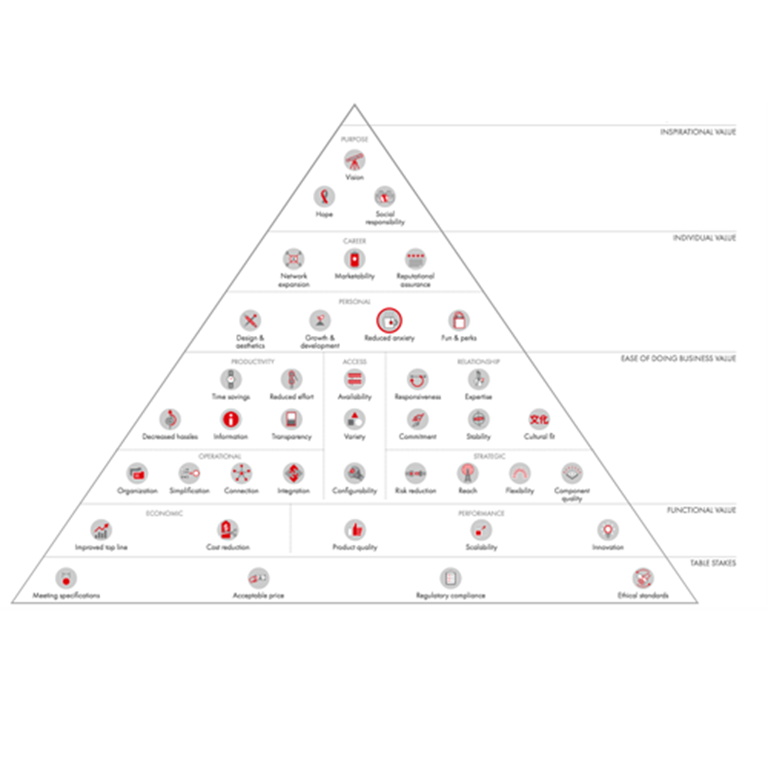Harvard Business Review
This article originally appeared in Harvard Business Review (subscription may be required).
It’s Saturday, and a chief operating officer who last week negotiated a multimillion-dollar deal for a fleet of vehicles for her company is feeling pretty good. To reward herself, she’s shopping for a convertible sports car to enjoy on weekends. Surely the price-value calculation she makes for a fun personal purchase is different from the one she made when negotiating at work, right?
Maybe those two calculations are not all that different. Her fleet decision obviously included objective criteria such as price, warranties, and service levels, but other, more subjective criteria figured in as well. For instance, the vehicles have to reflect the company’s brand. And their design and handling need to appeal to the employees who drive or ride in them, especially with the higher-end models for executives.

The B2B Elements of Value
What matters to business customers? Subjective concerns often play a surprisingly large role.
In reality, the differences between business-to-business and consumer decisions are not cut-and-dried. True, B2B sellers need to optimize prices, meet specifications, comply with regulations, and follow ethical practices. Procurement teams rigorously evaluate vendors and run total cost-of-ownership models to ensure that rational, quantifiable criteria around price and performance shape their analyses.
But today meeting those criteria is table stakes. As B2B offerings become ever more commoditized, the subjective, sometimes quite personal concerns that business customers bring to the purchase process are increasingly important. Indeed, our research shows that with some purchases, considerations such as whether a product can enhance the buyer’s reputation or reduce anxiety play a large role. Recognizing the full range of both rational and emotional factors behind business purchases—and tailoring the value proposition accordingly—is critical to avoiding the commodity trap.

Explore the B2B Elements of Value
What do your B2B customers value? Bain has identified 40 Elements of Value across five categories.
To help B2B suppliers understand the spectrum of customer priorities, we analyzed scores of quantitative and qualitative customer studies that our firm had conducted for clients over three decades, examining what mattered most to buyers. From this research, we identified 40 fundamental “elements of value.” They fall into five categories: table stakes, functional, ease of doing business, individual, and inspirational.
Like our related framework for consumer markets (see “The Elements of Value,” HBR, September 2016), our B2B model sorts the elements into the levels of a pyramid, with those providing more objective value at the base and those that offer more subjective value higher up. The model traces its conceptual roots to the hierarchy of needs that the psychologist Abraham Maslow first described in 1943. Then on the faculty at Brooklyn College, Maslow argued that human actions are motivated by an innate desire to fulfill needs ranging from the very basic (security, warmth, food, and rest) to the complex (self-esteem and altruism). Our elements of value approach extends those insights to people in corporate roles and their motivations for buying and using business products and services.
Eric Almquist, a partner with Bain's Customer Strategy & Marketing practice, outlines Bain research on the 40 elements of value that are in play in the world of B2B decision-making.
Read the full article in the Harvard Business Review.
A version of this article appeared in the March–April 2018 issue (pp.72–81) of Harvard Business Review.
Eric Almquist is a partner with Bain & Company’s Customer Strategy & Marketing practice and the global head of consumer insights for Bain. Jamie Cleghorn is a partner with Bain’s Customer Strategy & Marketing and Technology practices. Lori Sherer is a partner at Bain & Company in San Francisco and is co-leader of the firm’s Advanced Analytics practice.

Elements of Value® Insights
What do customers want? Bain's Elements of Value® represent the deeper aspirations behind the purchasing decisions of B2B and B2C customers. Our insights explore the ways companies can go beyond price to offer more value.